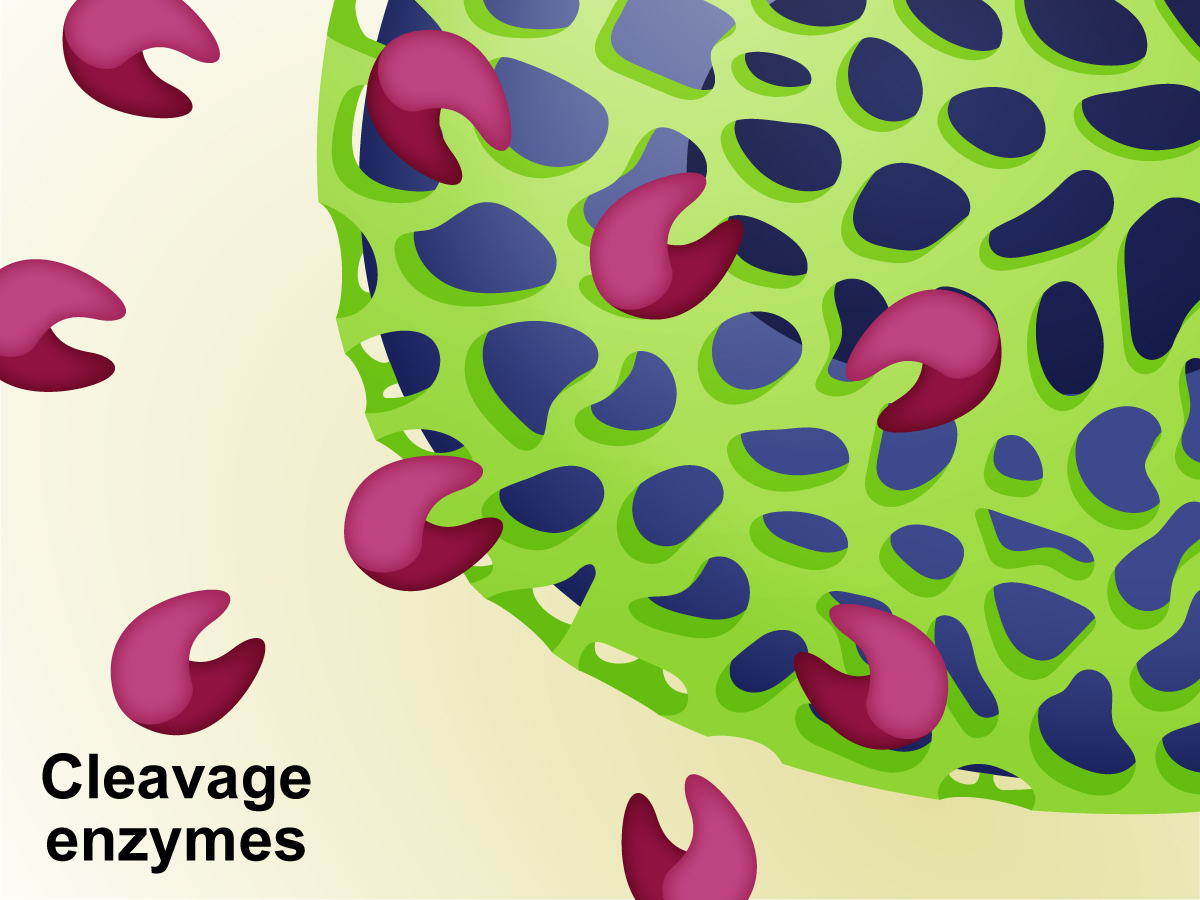New research from QBI may explain why vitamin D is so important to brain plasticity, and how vitamin D deficiency leads to a range of cognitive disorders, including depression and schizophrenia.
This paves way for new research that could lead to preventative strategies or better interventions for people with cognitive disorders associated with vitamin D deficiency.
More than a billion people worldwide are affected by vitamin D deficiency. Moreover, there is a well-established link between vitamin D deficiency and impaired cognition.
Yet, exactly how vitamin D influences brain structure and function is not well understood, so it has remained unclear why vitamin D deficiency causes problems.
Now, in a paper published in Brain Structure and Function, Associate Professor Thomas Burne and his team have shown that vitamin D levels influence the integrity of a type of ‘scaffolding’ in the brain, called perineuronal nets.
“If you were to get a net and throw it around a bean bag, the perineuronal net is the net, and the bean bag is a brain cell,” says Burne.
Vitamin D key to perineuronal nets
Perineuronal nets (PNNs) are made of proteins and sugar molecules that form a strong, supportive mesh around certain neurons. In so doing, they stabilize the contacts these cells make with other neurons.
In their new study, Burne and his colleagues removed vitamin D from the diet of a group of healthy young adult mice, while a control group continued to receive vitamin D. After 20 weeks, the vitamin D deficient group showed a significant decline in their ability to remember and learn, compared with the control group.
When the researchers examined the brains of the vitamin D deficient mice, they discovered a pronounced reduction in PNNs in the hippocampus, which is the brain region crucial to memory formation.
There was also a stark reduction in both the number and strength of connections between neurons in that region.
In a second paper, now published in Trends in Neuroscience, Burne and his colleagues propose that vitamin D plays an important role in keeping PNNs stable.
Specifically, they propose that normal vitamin D levels prevent certain enzymes from breaking down PNNs, but when vitamin D levels drop, these enzymes become unchecked and begin to degrade PNNs.
They explain that when this happens, neurons in the hippocampus are no longer properly supported by PNNs, and have trouble maintaining connections. This ultimately leads to a loss of cognitive function.

Hippocampus’ health a warning sign of schizophrenia?
The hippocampus isn’t the only part of the brain that uses PNNs to support connections, yet it was the region affected most by vitamin D deficiency.
A/Prof Burne suggests that PNNs in the hippocampus may be most strongly affected by vitamin D deficiency because it is so much more active than other brain regions.
“It’s like the canary in the coalmine,” he says. It might fail first because its high energy requirement makes it more sensitive to the depletion of essential nutrients like vitamin D.
Intriguingly, the right side of the hippocampus was even more affected by vitamin D deficiency than the left side.
A/Prof Burne isn’t sure why this is, but says it’s consistent with what is seen in people with schizophrenia.
Around 70% of people with schizophrenia have insufficient vitamin D, and schizophrenia patients also tend to have more disruption in the right side of their hippocampus, he explains.
“As well as dealing with spatial memory, the right side of the hippocampus is really important to your perception of reality and how you fit into the world,” he says.
Thus, loss of function in this area due to vitamin D deficiency could be an important contributor to the key hallmarks of schizophrenia, including severe memory deficits and a distorted perception of reality.
A/Prof Burne is now keen to test this new hypothesis on the link between vitamin D deficiency, PNNs and, cognition.
“We’re building a sandcastle, and we’re happy for other people to kick it over, or we can kick it over, but if people can’t kick it over, then it’s really important.”
He’s also particularly excited that their experiment shows that PNNs are changeable in adult mice. It was thought that PNNs were fixed by adulthood. If they can be broken down by vitamin D deficiency there might be a chance that, under the right conditions, perhaps new PNNs could form.
“I’m hoping that because they’re dynamic that we can rebuild them.”
If so, that could set the stage for new treatments, he says.
“We’ve got a lot of work to do.”
The experimental research has been published in the journal Brain Structure and Function. The literature review and proposed mechanism have been published in the journal Trends in Neuroscience.



